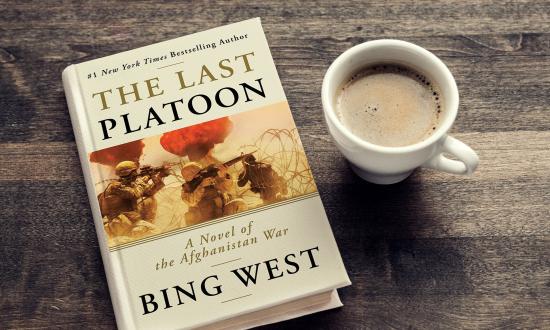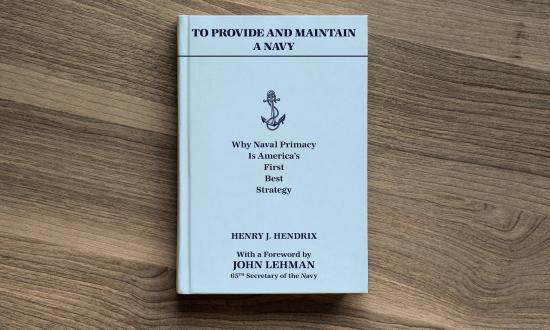Three Wise Men
Beau Wise and Tom Sileo. New York: St. Martin’s Press, 2021. 288 pp. $28.99.
Reviewed by Denis Clift
To begin to comprehend the U.S. commitment to the conflicts in Iraq and Afghanistan and the costs to and impact on American families, we should go back through military history to the lengths of the United States’ involvement in earlier conflicts: the Revolutionary War, 1775–83; the Civil War, 1861–65; the Spanish-American War, 1898; World War I, 1917–18; World War II 1941–45, the Korean War, 1950–53; the Vietnam 1965–75; and the Gulf War, 1990–91.
Following the 11 September 2001 attacks on the World Trade Center and the Pentagon, U.S. troops entered Afghanistan in October 2001 (though, special forces and the first U.S. airstrikes might have been as early as September 2001). U.S. forces are still there on the ground today. Three Wise Men is the story of American brothers: Jeremy Wise, a Navy SEAL; Ben Wise, an Army Green Beret—both killed in Afghanistan—and Marine Sergeant Beau Wise. The book is in Beau Wise’s first-person narrative. He served as a Marine on active duty from 2008 to 2016, including Afghanistan, with the 1st Battalion, 3rd Marine Regiment, 3rd Marine Division, until he was designated “sole survivor” by the Department of Defense and removed from active duty, against his will, for humanitarian reasons.
The Wise brothers grew up in rural Arkansas, enjoying hunting and fishing, playing guitar, bass, and drums, and listening to their mother’s tales of Wise forebears who had fought in the Civil War, World War I, and World War II. They had a sister, Heather, and their father was a reconstructive plastic surgeon, who hoped at least one of his sons would follow him into the medical profession.
Following the 9/11 attacks, Jeremy dropped out of medical school, made his way through BUD/S and into the ranks the of the SEALs, and headed off to Iraq. By that time, Ben already had enlisted in the Army. In 2004, he was serving in a scout platoon in Iraq and would return there as a Green Beret. Beau began his first Marine enlistment in 2008, completed Parris Island basic, and headed to the California desert to train for deployment to Afghanistan.
Navy SEAL Jeremy next headed from Iraq into Afghanistan. By 2009, he had stepped out of uniform and was a CIA contractor forward-based in Khost when he was killed by a suicide-bomber explosion on 30 December. He would be posthumously awarded the Intelligence Star by CIA Director Leon Panetta. Sergeant First Class Ben was killed in combat against the Taliban in Afghanistan on 9 January 2012 and posthumously awarded the Silver Star for his actions under fire.
Beau escorted brother Ben’s flag-draped casket back to the United States, and when he landed at Dover, Delaware, he was told that Commandant of the Marine Corps General James F. Amos was en route to pay his respects to his brother and the other fallen warriors.
‘I am very, very sorry,’ General Amos said to my mom. Seemingly in slow motion, the commandant then pointed in my direction. ‘Mrs. Wise, you have my word: Beau’s not going anywhere for a long, long time.’ . . . Then just after all of us sat down, I felt my father’s cold hand on my shaking knee. He didn’t speak, but in my head, I could hear him saying something to the effect of ‘I understand you’re upset, Beau, but the commandant is right.’
Three Wise Men is not so much military history or literature of war as it is a memoir nicely told, capturing a single family’s towering contributions to U.S. combat in Iraq and Afghanistan. It is a brother’s recounting that adds another page to the gallant record of American citizen-warriors from the earliest days of the Republic, a valuable record to have, a memoir well worth reading.
Mr. Clift is the vice president for planning and operations at the U.S. Naval Institute.
Raging Waters in the South China Sea: What the Battle for Supremacy Means for Southeast Asia
Rachel A. Winston and Ishika Sachdeva.
Irvine, CA: Lizard Publishing, 2020. 360 pp. Notes. Index. Images. Maps. $48.95.
Reviewed by Captain Sam Tangredi,
U.S. Navy (Retired)
Imagine if Lonely Planet, Rough Guides, or DK published a travel guide to the People’s Republic of China’s (PRC’s) artificial islands and the territorial disputes of the South China Sea. Raging Waters in the South China Sea is indeed that “travel guide.” Despite its unusual provenance, it should be a starting point on the reference shelf of anyone who studies, writes, or discusses China’s expanding control over the features, resources, and shoal bottoms of the South China Sea. The book follows the evolution of this expansion in a topic-by-topic and island-reef-by-island-reef format, accompanied by better color charts and graphics than most government or think-tank reports.
Lead author Dr. Rachel A. Winston is a retired professor of mathematics who also spent most of her career as an academic counselor. The publisher, Lizard Publishing, is her own imprint specializing in college planning and educational counseling. Coauthor Ishika Sachdeva is a graduate student. Hence, the comment on the book’s provenance: China and naval experts and policy makers would hardly notice this pair, let alone take them seriously. However, they have produced the most readable handbook on South China Sea issues, ranging from the Chinese Communist Party’s view of history and applicable international law, and ASEAN’s plea for calm diplomacy, to the step-by-step takeover of Thitu (Pag-Asa) Island, the standoff at Scarborough Shoal, and the encroachment of Indonesia’s Natuna Islands. Graphics on these topics include timelines for Chinese actions and other nations’ responses. There is a lot of production value invested in this work.
Of particular value is their discussion of the ecological damage to the maritime environment caused by China’s “great wall of sand” and the loss of coral reefs. In examining the question “Why aren’t environmentalists screaming?” the authors point to the cowering effects of the PRC’s relentless diplomatic pressure and money, encouraging organizations to hide in such statements as, “We’re sure you can appreciate [that] we cannot undertake conservation efforts everywhere.”
Similar value is delivered in their discussion of why involved states do not want to appear to choose between China and the United States (or neighboring states) and the shifting attitude of Filipino presidents.
All these individual topics have been treated in greater detail in other academic and analytical reports from more prestigious sources, experts who have spent lifetimes studying China-related issues. Raging Waters puts the forest together from the individual trees, with the targeted audience being “curious learners.” To that end, each chapter concludes with a discussion of “What’s at Stake.” As noted, the volume is a starting point, but an attractive and—like any good travel guide—easy source to use. With more than 500 citations, and including background theories such as hedging strategies, it does not lack for academic rigor, but is designed so the footnotes do not get in the way of the narrative.
Despite being self-published, the book can compete on equal terms with handbooks from think tanks and university presses. Hardly amateurish, it is a highly recommended entry dive into the issues and potential of conflict in the South China Sea.
Captain Tangredi is the Leidos Chair and Director of the Institute for Future Warfare Studies at the U.S. Naval War College in Newport, Rhode Island. He is a retired surface warfare officer and the winner of the 2021 U.S. Naval Institute General Prize Essay Contest (pp. 20–25).
The War Lords and the Gallipoli Disaster
Nicholas Lambert. Oxford, UK: Oxford University Press, 2021. 364 pp. Notes. Biblio.
Index. $49.95.
Reviewed by Admiral James Foggo III, U.S. Navy (Retired)
To understand the strategic and tactical decisions whereby governments commit large numbers of troops and resources to deter or defend far from their own shores requires a deep dive into the details that can take a considerable amount of time and patience. Nicholas Lambert does just that in his wonderful account, The Warlords and the Gallipoli Disaster.
Gallipoli, or “Canakkale” (as the Turks would prefer this hallowed ground to be called) was rather a Pyrrhic victory for the Turks, who succeeded in foiling the Dominion’s attempt to come and stay ashore. Records on the Turkish side are not as accurately documented as the Dominion side’s, but it is widely accepted that Turkey suffered 250,000 casualties in the campaign. The French suffered 27,000 casualties, and the Dominion forces of Britain, Australia, New Zealand, and India suffered 115,000.
These are staggering numbers, particularly when held to a 21st-century standard. So why, then, in 1915, with significant losses on the battlefield in Flanders, would Great Britain and others divert precious resources to secure the Dardanelles and establish primacy in a place like Gallipoli? This is where Lambert’s exceptional research provides clarity but not all the answers.
Western democracies, then and now, pride themselves on the fact that military forces are subordinate to civilian authority. Over time, civilian authorities have become wary of being seduced by military zealots, and governments have learned valuable lessons from
imperial overstretch that can lead to ultimate shifts in the balance of power. Hence, there is a tendency for civilian authorities to solicit and politely listen to military advice but to slow things down to mitigate risk. In this case, the opposite happened. Military advice was ignored.
It was not the Royal Navy or the British Army that wanted to spearhead an assault on the Dardanelles or an amphibious landing on Gallipoli, it was the “war lords.” Lambert calls out the war lords, led by Prime Minister Henry Asquith, for their individual and collective roles in the run-up to the disastrous campaign. Suffice it to say, they did not cover themselves in glory with the decisions they made.
Novice historians and those who have read or seen the play, Les Misérables, know that the French Revolution started over the rising cost of bread. Not many know that Great Britain was pressured to embark on a dangerous naval campaign in the Dardanelles culminating in an amphibious landing on Gallipoli over the rising cost of wheat! Lambert does a meticulous job of making the case for strategic and tactical errors over the fear of a disruption in the marketplace.
The wheat was coming from Russia’s farm belt and passing through the Dardanelles on its way to markets in Europe, the United States, or elsewhere. Its sale helped fund the war effort in Russia against Imperial Germany and the Austro-Hungarian Empire. The British, French, and Russians were unified by the “Triple Entente.” Funding of Russian forces in the field depended on the balance of trade, and the continued sale of wheat kept the price stabilized and prevented Great Britain and France from having to provide Russia with enormous loans. Restricting access through the Dardanelles by the Turks upset the balance in the market.
Turkey’s alliance with Germany and the Austro-Hungarian Empire allowed for pressurization of the campaign against Russia in the Caucasus. In January 1915, Grand Duke Nicholas Nikolaevich, head of the Russian Army, sent the infamous “Russian Telegram” to Lord Kitchener, requesting a naval or military demonstration against Turkey to relieve pressure on Russian troops in the Caucasus.
Accordingly, paranoia set in over Russia’s dire situation in the field, combined with the impact of wheat prices on the global economy. In London, Asquith, Winston Churchill, and the war lords not only pushed the Admiralty to conduct a naval-only bombardment of the Turkish forts in the Dardanelles, but, contrary to the advice of on-scene naval commanders, also ordered a close-range naval bombardment that resulted in the loss of one-third of the battleships participating in the attack. As the political and military situation spiraled out of control, Asquith ordered an ill-advised amphibious assault on Gallipoli, resulting in disaster for the forces ashore.
Anyone who has been to the battlefield of Canakkale can see by looking down from the entrenched Turkish positions that the fight uphill from the beachhead against a rugged and elevated terrain, was, for the British and ANZAC troops, insurmountable. Further, the Turks were defending sovereign soil, which contributed to their sense of purpose.
In the final analysis, this book accomplishes its objective by demonstrating how politicians, operating on incorrect assumptions, lack of intelligence, or incomplete information, can blindly rush to failure, exacerbating an already difficult crisis. With all the tension and crisis in the world today, it would behoove U.S. military leaders to hit “pause,” read this book, and consider their actions carefully in the High North, western Pacific, or Middle East.
Admiral Foggo is the former Commander of NATO’s Allied Joint Force Command Naples, Italy; Commander of U.S. Naval Forces Europe; and Commander of U.S. Naval Forces Africa.
Race of Aces
John R. Bruning. New York: Hatchette Books, 2020. 522 pp. Biblio. Sources. Notes. Index. $30.
Reviewed by Commander Graham Scarbro, U.S. Navy
From the frozen tundra of Alaska to the untamed jungles of the southwest Pacific, Race of Aces tells the enthralling story of the competition to claim the American World War II title of “Ace of Aces”—the fighter pilot with the most aerial victories of the war.
Part five-sided biography, part adventure tale, part reflection on the price of fame, John Bruning’s story of the fighter jocks who chased glory is a fantastic read. Paced like a novel and filled with characters and exploits straight out of blockbuster movies, Race of Aces could be mistaken for the stuff of fiction. That its cast of Pacific theater Army Air Corps flyers—Bong, McGuire, Kearby, MacDonald, Johnson—may be relatively unknown to navalists more familiar with Vraciu and McCampbell adds to the air of the unbelievable. However, these men and their feats of derring-do were very real, and in Race of Aces they are brought to life by Bruning’s meticulous research and smooth prose.
The race for the title begins when the struggling, beleaguered airmen of the southwest Pacific theater are met—and challenged by—America’s World War I Ace of Aces, Eddie Rickenbacker. To inspire the harried pilots who subsisted on the tail end of America’s war effort in the South Pacific, the legendary ace promises a case of scotch to whomever can beat his tally of 26 victories. The resulting sprint for kills soon becomes a marathon as a young generation of pilots slogs across the Pacific with Rickenbacker’s record, and the Japanese, in their sights. Along the way, they grind through the skies from Australia to the Philippines, encountering legends of U.S. history such as Chuck Yeager, General Douglas MacArthur, and, in one of the book’s more “straight-out-of-Hollywood” moments, “battlefield tourist” Charles Lindbergh.
The book is not all pulp novel fantasies of chivalrous aerial victory, though. The pilots, competing to become the best of the best, find themselves changed by the war and, tellingly, changed by the spirit of the competition for the aerial crown. How did these young, idealistic men from Oregon, south Florida, or the Midwest become aggressive killers thirsting for the hunt? How did their competition among themselves change the way they approached the risks of air warfare? How did their hunger for risk ultimately doom so many of them to live fast and die young?
The resulting answers form the backbone of the story, as the war moves far from U.S. shores into the brutal battles in the Pacific, a world away from home. The heroes of the tale either die on the battlefield or return home forever changed by their experience.
Race of Aces is the kind of history this reviewer loves to read: fast-paced, well researched, exciting, engrossing, sobering. Fans of James Hornfischer’s histories (Neptune’s Inferno, The Last Stand of the Tin Can Sailors, The Fleet at Flood Tide) will find in Bruning a similar style and approach. The book is a page-turner in the truest sense and captures the relentless pace of aerial combat in the Pacific, while contrasting it with the victors’ surreal return home and the toll of relentless war on the pilots who fought it.
Commander Scarbro is an active-duty naval flight officer. He is the 2019 Proceedings Author of the Year.









